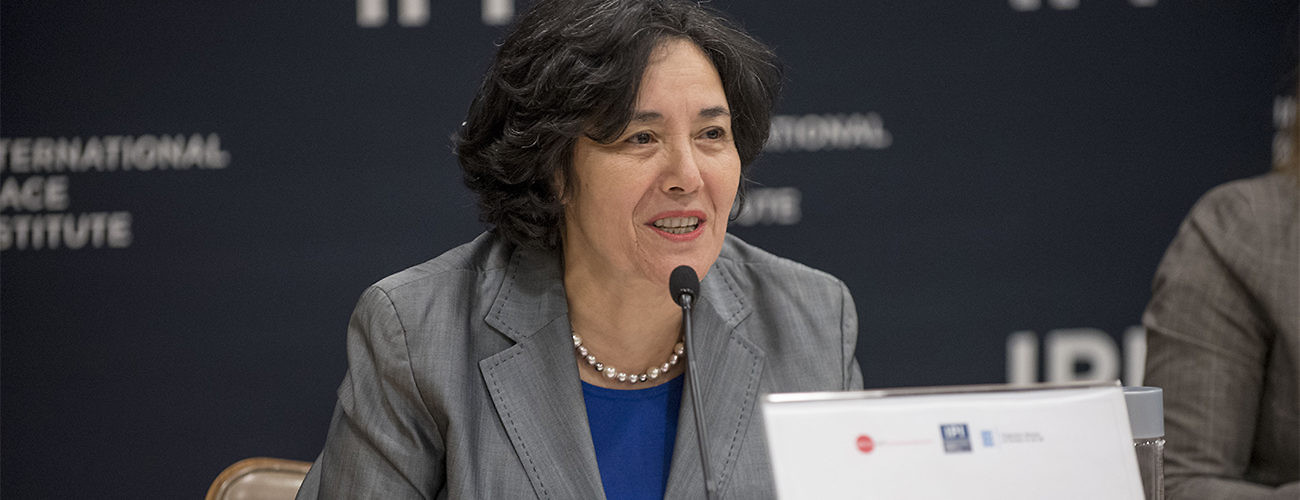The needs of children must be regarded from the very outset of a peace process. This was the call to action from the Special Representative of the Secretary-General for Children and Armed Conflict, Leila Zerrougui, at a February 6th IPI event on the topic of “Peacemaking and Child Protection: New Guidance on the Rights and Needs of Children in Peace Processes.”
“I would insist and repeat that the issue of children is an entry point for the mediator, for building trust, and needed for ending in every conflict,” she said.
Truly addressing children’s needs requires more than just talking about them, she said. “Another important issue is not just to include children in the discussion, but in a framework for a separate program for children’s separation from the armed forces, and a program for their reintegration,” she said.
Making a similar point, Sven Jürgenson, Permanent Representative of the Republic of Estonia to the United Nations, said, “Children’s rights are not additional points to be inserted into peace agreements—they in fact form peace agreements.”
He cited the importance of the Checklist for Child Protection Provisions—guidance for mediators and their teams for drafting children and armed conflict provisions in peace agreements. Its purpose, he said, is “making governments understand that because children are the sufferers of war, they should be the purpose of peace.”
Eva Smets, Executive Director of Watchlist on Children and Armed Conflict, described a database she had worked on which found that many efforts to resolve conflict overlook the rights and needs of affected children. A recent study by her organization found that out of 431 relevant documents from the UN Peacekeeping Database, 75 documents included references to children’s protection—just 17%.
She also noted that it was important to acknowledge the fact that children officially include anyone under the age of 18. “How do we define ‘child’ and ‘child soldier?’ Is it under 18?” she asked. With a common understanding of who is being discussed, the parties can move on to the next issue, which is to “recognize children as victims first,” and focus on their “effective reintegration into society, rather than [their] punishment.”
Kai Sauer, Permanent Representative of Finland to the UN, and Co-Chair of the Group of Friends on Mediation, brought a member state perspective to the panel. He praised the group’s 44 member states for coordinating four UN General Assembly resolutions.
Mr. Sauer also spoke from his own experience as a mediator in the Kosovo Future Status Process (UNOSEK) in Vienna, ten years ago. In practice, there are three interests in a negotiation: the parties, the sponsors, and the mediator (the UN), he said. There are also additional groups on the fringes, like UN agencies and civil society, who join the conversation.
“All three groups have their own agendas, and each party can influence the content of negotiation,” he said. “The question is how to insert value-based elements like children in armed conflict—that’s the challenge.”
The event was co-hosted with Watchlist on Children and Armed Conflict, and the Permanent Mission of Estonia to the UN.
Andrea Ó Súilleabháin, IPI Senior Policy Analyst moderated the policy forum.








